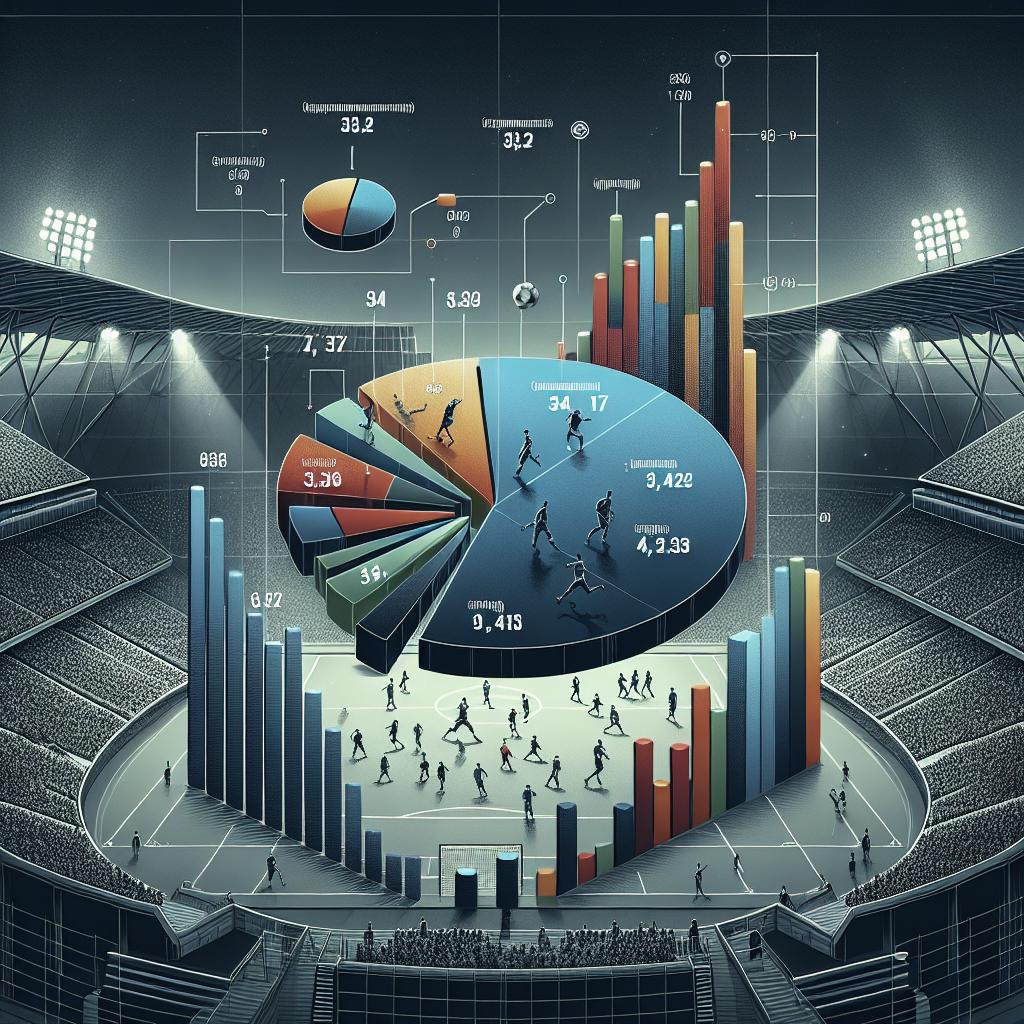The Rise of Esports Esports, or competitive gaming, has rapidly transformed into a multi-billion-dollar industry, driven by an expansive and dedicated global community. As a cultural phenomenon, it parallels the rise of traditional sports, yet hosts its unique characteristics that influence game development immensely. This shift in the entertainment paradigm has prompted developers to prioritize competitive aspects, incorporating features and gameplay mechanics that can withstand high-level competitive scrutiny. Initially, game developers were focused on creating immersive single-player experiences or multiplayer games with minimal emphasis on competition. However, as esports began to attract significant audiences, the demand for games that support competitive play grew. Developers now face the challenge of balancing entertainment with competitive viability, leading to innovation in game genres, control mechanics, and strategic dynamics. Recognizing esports’ influence is crucial, as the industry often dictates design principles that cater to both players and spectators. Market Growth and Revenue The esports market has demonstrated remarkable growth over recent years, driven by investments from both endemic and non-endemic brands. As of 2023, the esports industry’s revenue is projected to surpass $1.5 billion, with further expansion anticipated through sponsorships, media rights, and merchandise sales. This financial upward trajectory is prompting game developers to focus more on esports-ready structures to tap into this lucrative market. Revenue growth is not only beneficial for game developers but also essential for maintaining a thriving esports ecosystem. Teams, event organizers, and platforms benefit from the substantial financial backing, nurturing an environment where developers are incentivized to produce titles conducive to esports competition. Developers thus face the challenge of creating sustainable monetization pathways that engage both players and audiences without compromising gameplay integrity. Viewership and Audience Esports viewership has witnessed exponential growth, with major tournaments attracting millions of live and online spectators. Platforms like Twitch and YouTube Gaming have become pivotal in broadcasting live esports events, contributing significantly to their success. These viewership trends directly influence game development, as creating visually appealing and strategically engaging games becomes essential to capture and maintain audience interest. Understanding demographics and viewer preferences is crucial. Developers leverage analytics from streams to refine and adapt game mechanics, seeking to enhance the spectator experience. In-game features such as spectator modes and broadcasting tools are tailored to allow casters to highlight key moments, thus maximizing viewer engagement. This shift towards viewer-centric game design illustrates how audience demand shapes development priorities in the esports domain. Technological Advancements The esports and gaming industries are intrinsically linked to technological advancements, which continually redefine game development possibilities. The advent of new technologies like VR and AR, alongside cloud gaming, presents developers with fresh opportunities to innovate and expand the horizons of competitive gaming. *Virtual Reality (VR) and Augmented Reality (AR) * The integration of VR and AR into esports represents a burgeoning frontier for game development. These technologies offer immersive experiences that transport users into the heart of the game, potentially revolutionizing how players engage with and compete in digital environments. The challenge lies in developing content that is not only competitive but also physically and mentally comfortable for players over extended periods. VR and AR also offer new dimensions for viewer engagement. Spectators could access unique angles and interactive experiences traditionally unavailable in conventional esports. Developers are thus incentivized to explore these advancements, crafting content that capitalizes on sensory immersion while ensuring accessibility and competitive balance. *Cloud Gaming * The growth of cloud gaming platforms signifies another transformative trend for esports and game development. Cloud technology eliminates hardware barriers, allowing a broader audience to engage in competitive gaming through any device with a stable internet connection. For developers, this opens up new revenue streams and a wider market reach, accelerating the push towards seamless cross-platform play. Cloud gaming also enhances scalability, enabling developers to host large-scale tournaments with reduced infrastructure costs. This accessibility encourages an influx of players, fostering a more diverse competitive landscape. Game development, therefore, continues to evolve alongside these technologies, focusing on performance optimization, latency improvements, and cross-platform compatibility. Social and Cultural Impact Esports is not merely a technological or economic phenomenon; it also wields significant social and cultural influence, shaping community dynamics and educational opportunities. *Community Building * The global and inclusive nature of esports fosters the creation of diverse, tight-knit communities. Through forums, live chat, and in-game communication, players and fans can form connections across geographical boundaries. Developers must understand these community dynamics to cater to their interests, often implementing features that encourage collaboration, support competitive spirit, and provide a sense of belonging. Community-driven feedback is invaluable for developers aiming to improve and enrich gaming experiences. By engaging with the player base, developers can ensure their products align with community desires, thus fostering a loyal and active user base. This symbiotic relationship between developers and communities emphasizes gaming’s role as a social platform beyond mere entertainment. *Education and Career Opportunities * Esports offers myriad educational and career pathways, nurturing skills ranging from strategic thinking to digital literacy. The industry’s growth has spurred educational institutions to integrate esports programs that teach the business, marketing, and production aspects of the field. For game developers, this translates into a skilled workforce that understands the nuances of competitive gaming and its underlying mechanics. Training the next generation of esports professionals ensures sustained industry growth and innovation. Developers who engage with educational initiatives contribute to shaping a knowledgeable community that can drive future advancements in game technology and competitive integrity. Economic Impact The economic ramifications of esports extend beyond direct revenue generation, influencing job creation and market expansion in related sectors. *Job Creation * Esports has catalyzed job creation across various domains, including game development, marketing, event management, and content creation. Developers benefit from this employment boon, as a thriving industry demands a continuous influx of talent capable of producing and marketing innovative esports titles. Robust job growth further promotes investment and expansion within the gaming industry. In this burgeoning ecosystem, developers and industry stakeholders must focus on fostering inclusive job opportunities that leverage diverse skill sets. By nurturing talent through professional development and accessible platforms, the ecosystem as a whole can achieve sustainable growth and diversification. Technological Innovation The competitive landscape of esports is a fertile ground for technological innovation, driving developers to continuously enhance gaming engine capabilities and player experiences. Game developers are compelled to push technological boundaries, crafting cutting-edge graphics, seamless match infrastructures, and robust anti-cheat mechanisms. These innovations not only elevate gaming standards but also ensure the longevity and popularity of esports titles. Developers who embrace and contribute to technological advancement are better positioned to lead in the competitive gaming industry. Challenges and Opportunities While esports offers vast opportunities, it also poses unique challenges that developers and industry leaders must address. *Mental Health and Well-being * The high-pressure environment of esports can affect players’ mental health and well-being. Developers and organizations are increasingly tasked with addressing these issues, incorporating wellness initiatives and breaks into professional gaming routines. By prioritizing holistic player development, including mental health resources, the industry can foster a healthier competitive environment. *Regulation and Governance * The relative novelty of esports demands the establishment of cohesive regulation and governance frameworks. Developers and stakeholders must collaborate to standardize rules, enhance fair play, and establish effective player contracts and legalities. Proper regulation promotes transparency, integrity, and long-term sustainability within esports. *Inclusivity and Diversity * Inclusivity and diversity remain central to the continued success of esports. Game developers and stakeholders must strive to ensure that esports is accessible and representative of its diverse global audience. Inclusive design, equal opportunities, and initiatives focusing on underrepresented groups can broaden participation, enrich the industry, and nurture a richer competitive landscape. The Future of Esports and Gaming The future of esports promises further integration with traditional sports, technological advancements, and expanded markets. *Expansion into New Markets * Emerging markets present exciting prospects for esports growth, where increasing internet penetration and technology adoption fuel potential new audiences. Developers must adapt and localize their products to resonate with diverse cultures and demographics. By broadening international reach, the industry can cement its global status and unlock new revenue streams. Integration with Traditional Sports The convergence of esports and traditional sports heralds new opportunities and challenges for developers seeking to innovate and reimagine competitive entertainment. *Technological Advancements * The merging of esports with traditional sports facilitates cross-industry technological innovations. Developers can collaborate to develop cross-platform experiences, athlete performance analytics, and fan engagement strategies. This fusion drives creative solutions that redefine the boundaries of sports and entertainment. Social and Educational Impact Esports’ integration with education and its social implications are profound and multifaceted. *Role of the Global Esports and Gaming Alliance (GEMA) * Organizations like the GEMA play a pivotal role in shaping the educational and social landscape of esports. By advocating for educational content and community initiatives, these alliances support the positive impact of esports on society. Developers aligned with such organizations can contribute to meaningful change and promote positive values within the gaming community. — Final Thoughts The intersection of esports and game development is a dynamic field driven by technological, economic, and cultural forces. Developers must navigate various trends and challenges to remain competitive and innovative. “`html
| Aspect | Impact on Game Development |
|---|---|
| Market Growth & Revenue | Encourages developers to support esports structures for monetization. |
| Viewership & Audience | Influences game design to enhance visual appeal and strategic depth for viewers. |
| Technological Advancements | Prompts innovation in VR/AR and cloud gaming platforms. |
| Social & Cultural Impact | Drives community engagement, education, and career opportunities. |
| Economic Impact | Boosts job creation across various industry domains. |
| Challenges & Opportunities | Addresses mental health, regulation, and diversity within esports. |
| Future Trends | Explores market expansion and integration with traditional sports. |
“`


